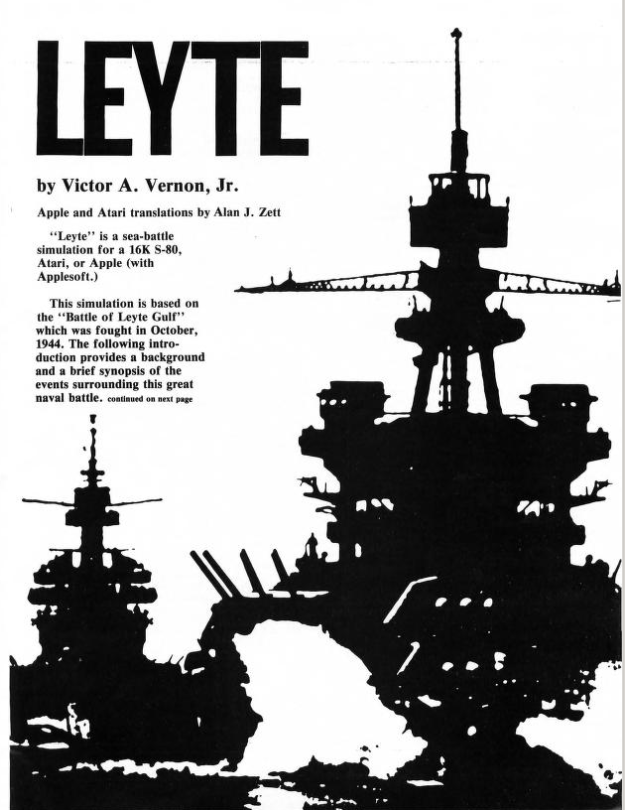
After playing Victor A. Vernon’s Savo Island, I felt myself compelled to try Vernon’s earlier game I had skipped : Leyte, which had been released in October 1981 in Softside as a type-in for Apple II, Atari and S-80 computers.
The Battle of Leyte Gulf (23-26 October 1944) is probably the largest naval battle in history, and involved close to 400 ships, including 40 carriers, fleet carriers, light carriers or escort carriers, mostly from the U.S. The game introduction elaborately though not always clearly details the manoeuvres of the diverse American and Japanese task forces, the diversions, the blunders, and the many miscommunications which allowed a Japanese fleet to sneak through a defenceless San Bernardino Strait to intercept the US transports as they were disembarking at Leyte…
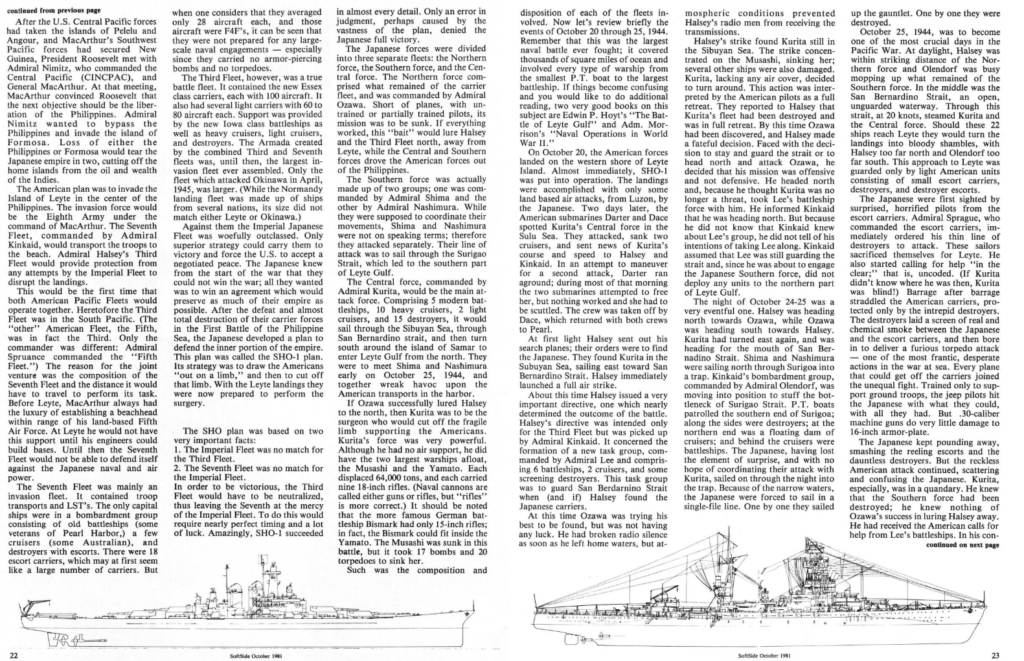
… and then Vernon tosses everything he explained aside “The preceding narrative explains what actually happened. The following will explain how to play the simulation. It is based on what MIGHT have happened if Lee had been waiting for [the Japanese] at the mouth of San Bernardino.” Fictitious battle it is, then.
The game displays a view of the strait (with North to the right). The Japanese fleet [J] must cross it while the American [A] fleet under the player’s control must stop it by sinking all the Japanese battleships and cruisers :
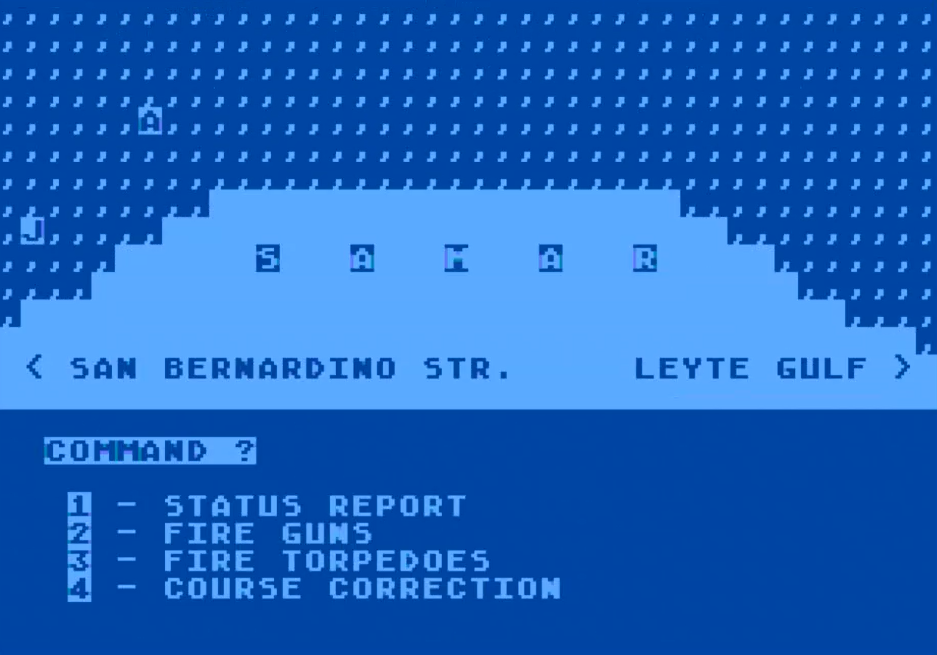
On the screen, the “J” represents the Japanese fleet composed of :
- Three battleships – the Yamato, the Nagato and the ageing Kōngō,
- Four cruisers – the Haguro (the game instructions call it a battleship, the ship was not featured in Buck Danny so I would not know but Wikipedia disagrees), the Chōkai, the Suzuya and the Nagara,
- Eight destroyers, regarded by the game as a singular unit,
Meanwhile, the Americans (“A”) bring to the table :
- Five battleships – the USS New Jersey, the USS Iowa, the USS Washington, the USS Massachusetts, the USS Alabama,
- Two cruisers – the USS Baltimore and the USS Pittsburgh,
- Six destroyers, regarded by the game as a singular unit,
The Yamato is of course the freaking Yamato, but each of my five battleships is better gunned and armoured than their second-best battleship – the Nagato – so overall the Japanese will fight at a massive disadvantage.
There are 4 commands available, but one is to check the status of the ships and the other one is to change course – and I only did that once at the beginning to move toward the right / North – so the only choice is whether to shoot at the Japanese with guns or with torpedoes.
This is a difficult decision, and you can pick only one every turn :
- If you choose guns, all your ships can fire at long-range, with a decent chance to hit. The shells usually explode when they hit their targets, which is always appreciated,
- If you choose torpedoes, the only unit attacking is the group of destroyers, which will fire torpedoes at one enemy, with a good chance to miss, and if they hit their target a good chance not to cause any damage due to the quality of the torpedoes.
Choose wisely !
As for me, I choose guns and start firing. The instructions specify that accuracy depends on distance but also on “whether the target has been fired upon by another ship”, because “if two or more ships are firing on the same target, it is impossible to tell which splashes go with each ship’s fire” as the gunners try to zero in.
I have 8 units and there are 8 possible targets, so for proper splash allocation each of my ships shoots at a different target, from the USS New Jersey shooting at the Yamato down to my destroyers shooting at their destroyers :

The Japanese adopt exactly the same strategy :

And… that’s all there is. I shoot every turn with guns, and the Japanese do the same as we are both moving toward the right of the map.
Eventually, I am informed that I sank both the Yamato and the Nagara :
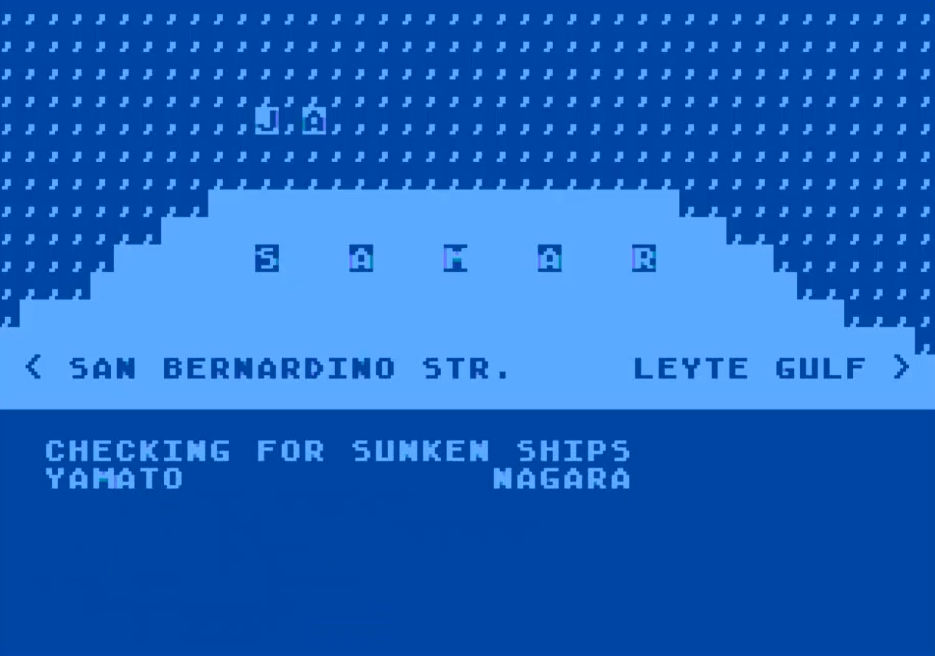
I surmise that the other Japanese ships are quite damaged (mine are still in pretty good shape, except the USS New Jersey which was badly battered by the Yamato) :

I change my strategy, and always focus on the heaviest surviving Japanese ship. They go down one after the other :
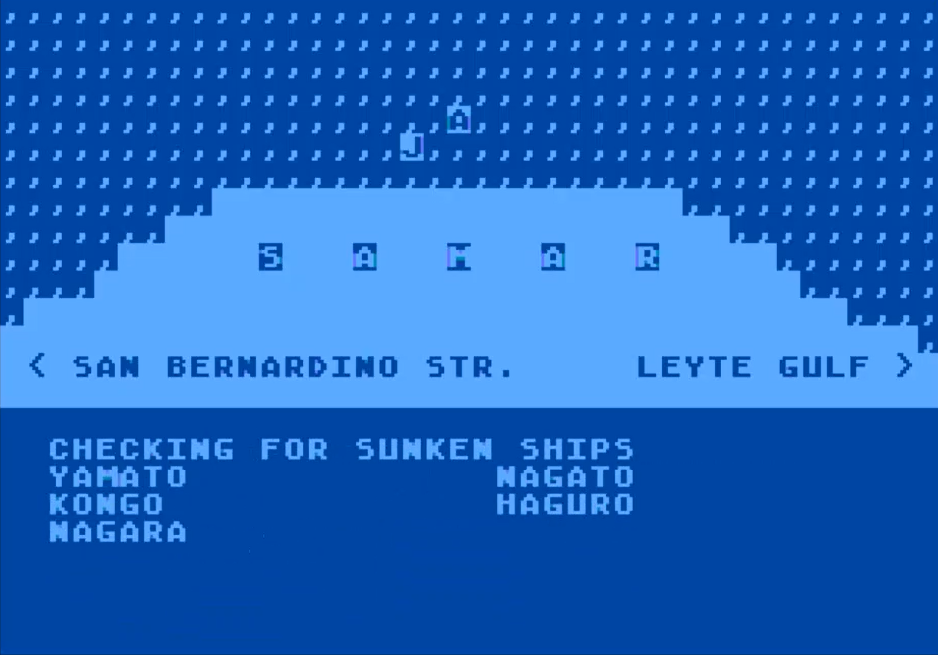
The Japanese are down to 2 cruisers and an undetermined number of destroyers. It’s in the bag.
One turn later, the game lists all 7 Japanese major ships in its “sunk” list and concludes.

I played the game twice, and won both times in less than 10 minutes without taking any decision. Now I remember why I had skipped this game initially!
3 Comments
Ooof. That’s a big disappointment!
Yeah, not a compelling game. But I have to speak out in support of Softside magazine. The magazine started in 1979, a few years before dedicated commercial gaming magazines became a thing. The TRS-80 was getting the most software support at the time and there was a lot of amateur coding going on and being shared around. Groups like The Software Exchange were curating the best of what they could find.
Softside’s mission was to take home computer gaming up a level from the mainframe world. where David Ahl’s books of Computer Games were the most common source of gaming code at the time and those were getting pretty stale. Softside often goes into the background of the idea for the game, and then breaks down each section of the code, describing the processes and variables used. There were often ideas mentioned on how you might improve the type-in code and take it further. I don’t think this really worked for most folks, who would just rather order the code on tape and ignore the magazine altogether. But if you are interested in learning about game development, and ideas for new games circa 1978-1982, the Softside magazine archives is one of the best out there.
It is a good point, certainly. Still, I was clearly more impressed by Savo Island, which was not a great game, but impressive for a type-in (as Harland also said).
I am not done with BASIC games from the 70s, and expect more “mainframe games” articles soon :).